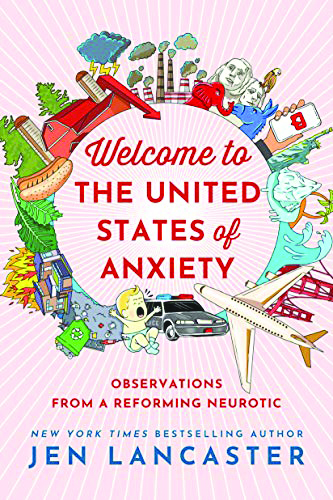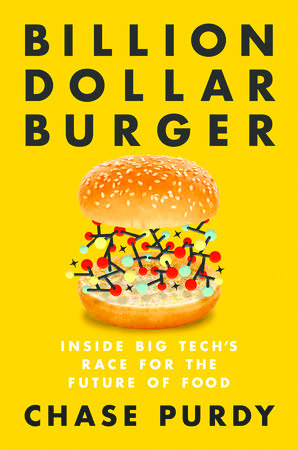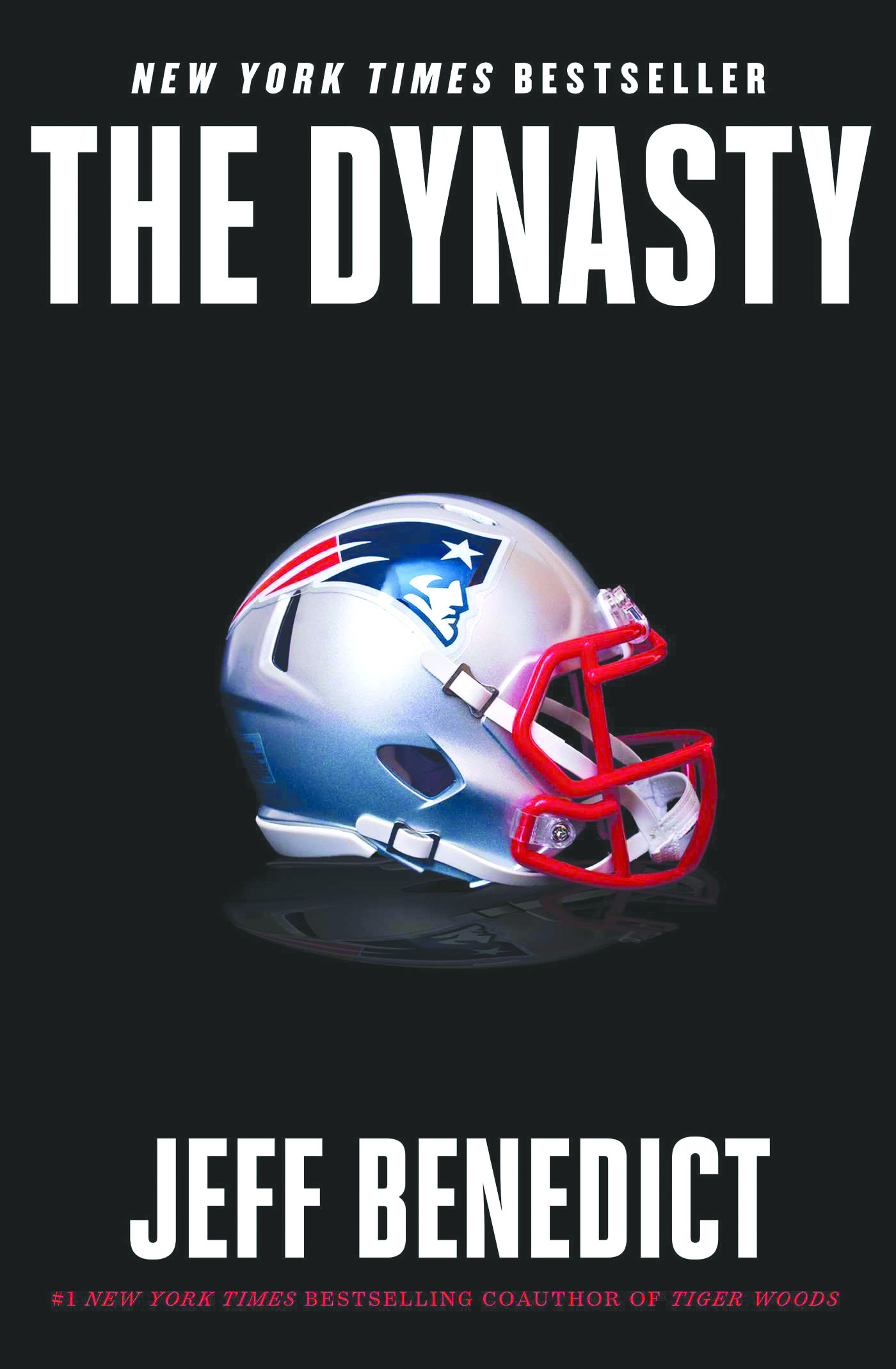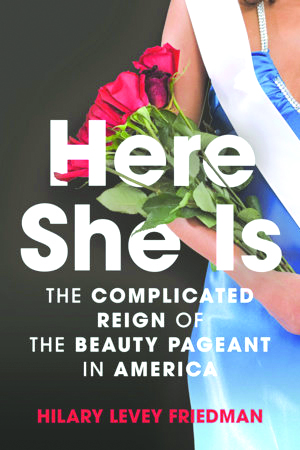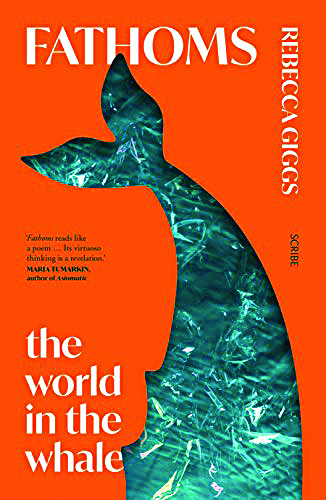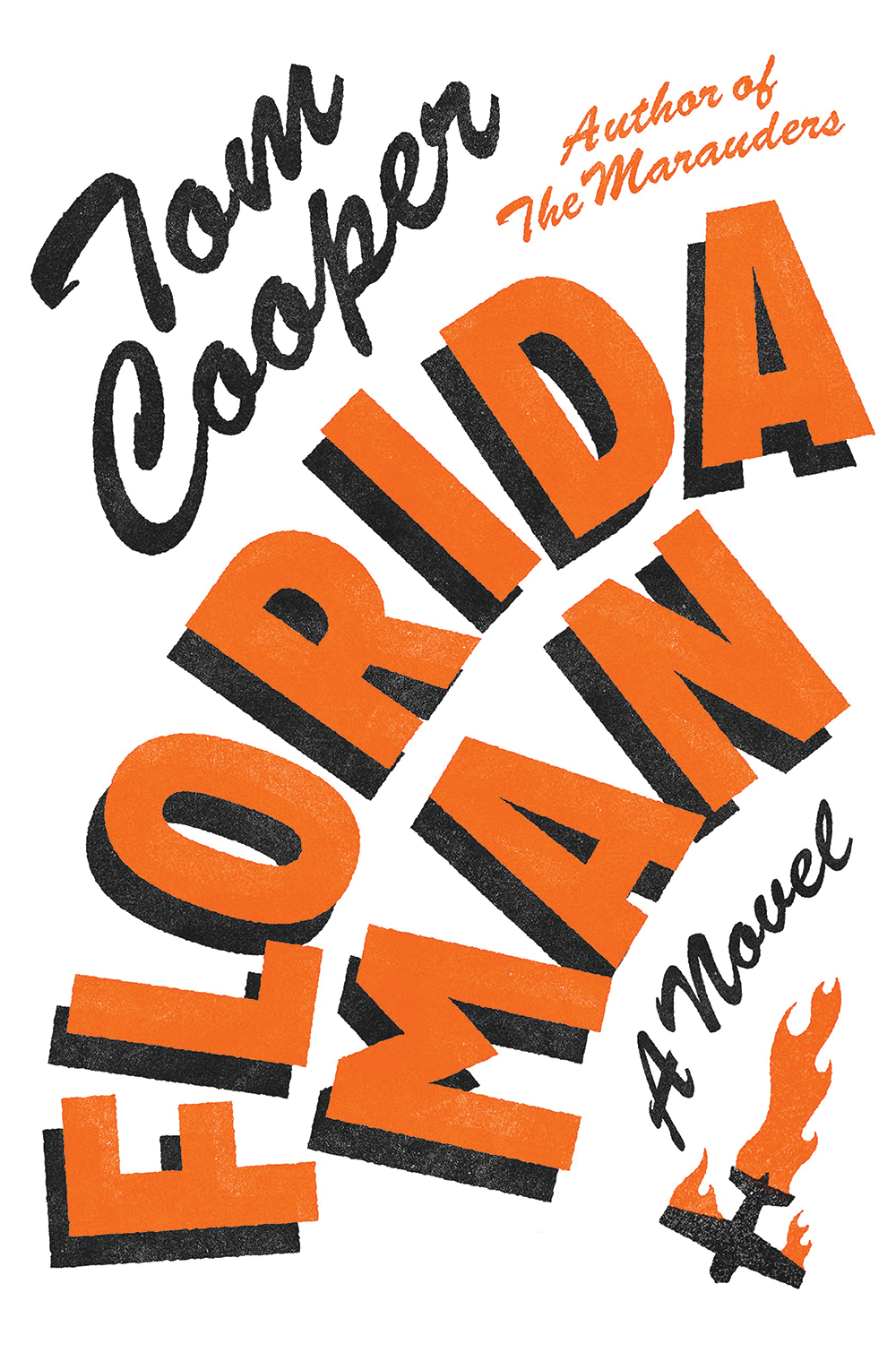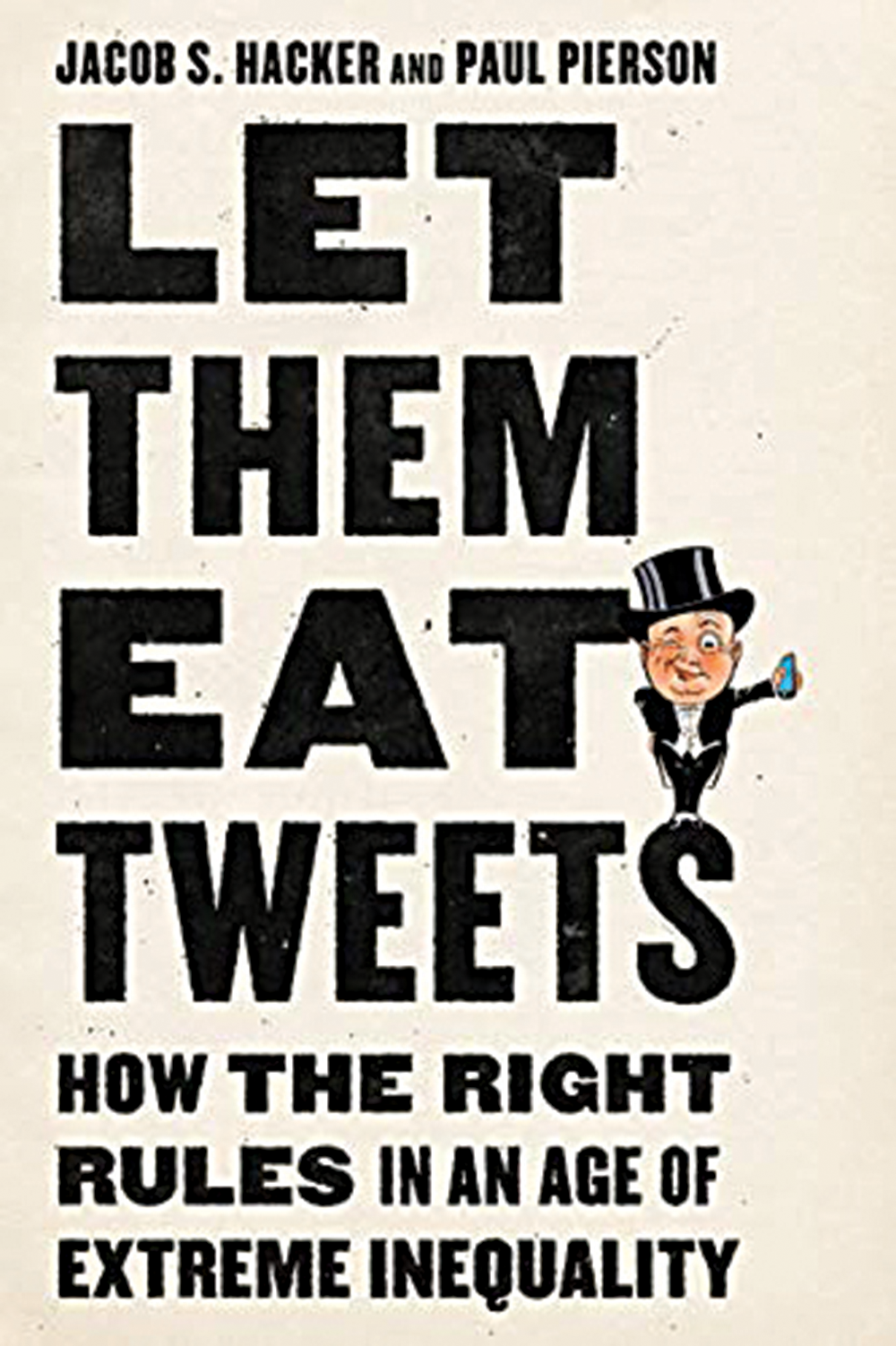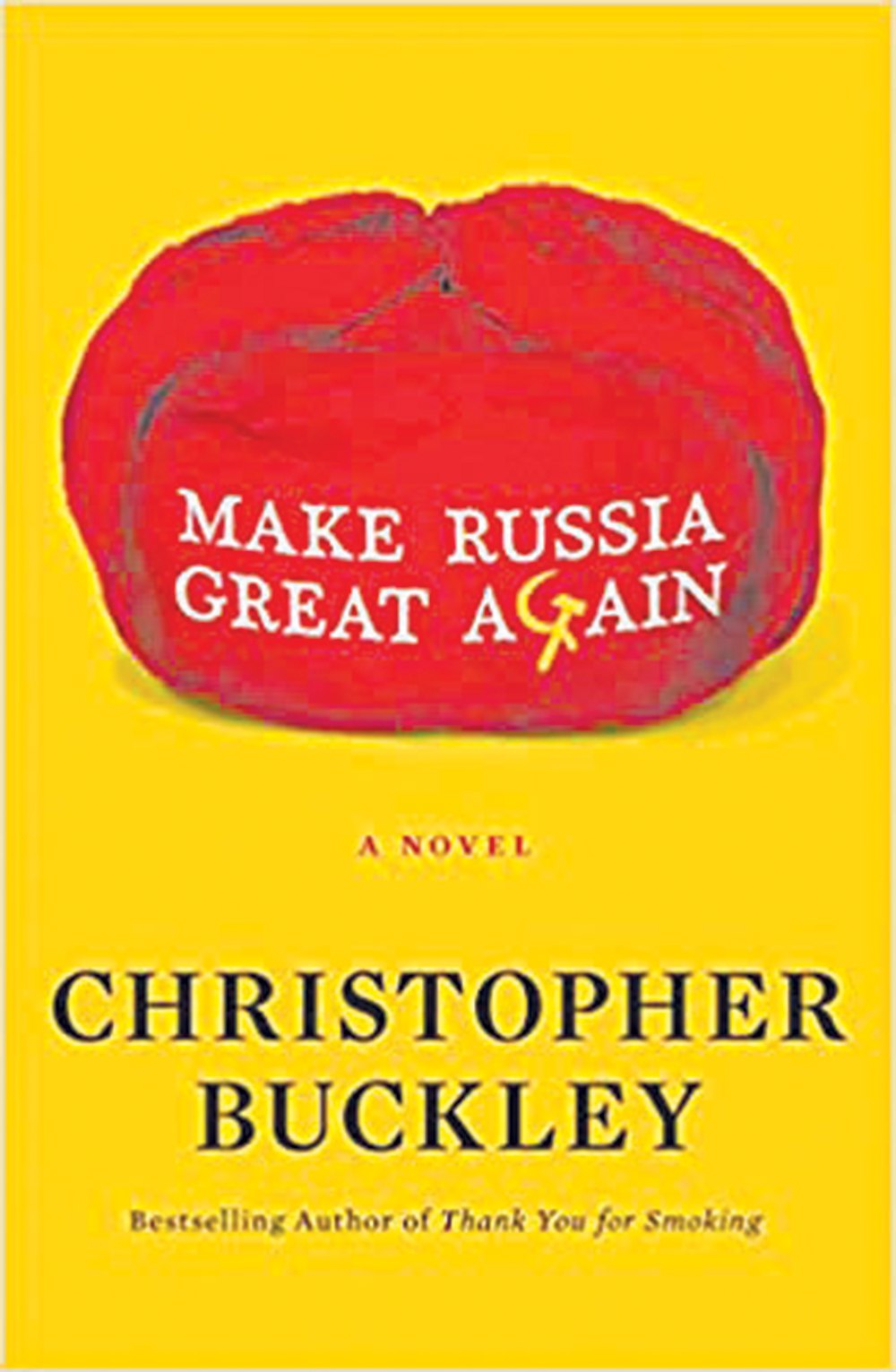Welcome to the United States of Anxiety, by Jen Lancaster (Little A, 239 pages)
Jen Lancaster, self-described reforming neurotic, is a little anxious these days. Specifically, she is “a bundle of nerves, swaddled in a blanket of panic.”
You might find this surprising, given that she is a wildly successful author (15 previous books) with TSA PreCheck and enough disposable income and time to routinely buy kale salad at a Whole Foods two towns away. Or maybe all that explains why she is so anxious.
Regardless, the author of Such a Pretty Fat and Bitter is the New Black is here to help the rest of us dissolve our pre-election nerves and be more like her father, a man so unaffected by encroaching disaster that he calmly kept reading the sports pages in the middle of a flight in which the plane lost an engine and the oxygen bags descended. (Which recalls a book by another Jen — Jen Sincero of You are a Badass fame.)
Lancaster didn’t learn about her father’s nearly catastrophic fight until decades later, in part because he’s not the sort of man to obsessively worry about things that might happen (“We had my mother for that,” she says), and in part because he didn’t live in age in which people had outsized reactions to virtually everything. By almost every measure, the world is a safer place than it’s ever been for large swaths of people. “So … why the hell does it feel like the ends of days?” Lancaster asks. “Why does it seem like it’s about to rain locusts? Why am I cuffing my pants for the coming rivers of blood?”
There is a short answer, of course: social media. But that doesn’t make for a book. And so Lancaster dusts off the late Abraham Maslow’s “hierarchy of needs” to serve as a sort of intellectual scaffolding on which to hang a collection of comical riffs about the state of American culture today.
Maslow, you may recall from high school, believed that human beings have to fulfill their most elemental needs, such as shelter and safety, before advancing to first-world accomplishments like self-esteem and self-actualization. In other words, you can’t worry about safety and security if you’re starving and cold; you can’t worry about love and accomplishment until you are safe. So, yes, this kind of fits into a conversation about anxiety. And it’s useful for dividing the book into five parts. But the structure seems a bit contrived and distracts from Lancaster’s comic gifts. We are force-fed Maslow when all we really want is vintage Jen, master of the bon mot.
After establishing her neurotic credentials (she says she is “actively afraid of bread”), Lancaster embarks on a tour of America the anxious, beginning with our obsession with having ethically grown, nutritionally complete and Instagram-worthy cuisine. Her grandparents, Italian immigrants, would scoff. They ate “whatever washed up on the shore in Italy” and later, “once they settled in Boston, their culinary repertoire expanded to include weeds they picked in the yard and the small animals they trapped in their attic.”
On the subject of clothes, another of Maslow’s first-tier needs, she brings us to an improv class she took at Chicago’s famous Second City comedy school, where she was told that clothes are a nonverbal announcement of identity. “My skirted leggings, tunic sweater, and matching scarf announced ‘I had a 20 percent off coupon at the Eileen Fisher outlet.’”
And so she goes, spinning through her own world and current events with a caustic tongue and just enough winsome deprecation to soften the edges.
One of her stories is one she’s told before, in another, shorter version in HuffPost eight years ago.
She was waiting in line for that kale salad at Whole Foods when a mother and child “cut in front of me with such grace and sense of purpose that I felt compelled to apologize for having arrived first.”
The girl, Margot, was about 6 and was wearing $300 jeans and carrying a Burberry purse. The mother was wearing jodhpurs and riding boots, “coated with a thin sheen of dust after she’d doubtless whiled away the day jumping rails in an indoor arena.” The child then proceeded to whisper questions that the mother relayed to the chef as if she was interpreting for a queen … about the quality of the sushi. Lancaster tells the story not with a keyboard, but a machete, and it is just perfect.
Less perfect are her many entreaties for us to live better, to reduce our paralyzing anxiety via platitude. Worst offense: “If your closet’s too overloaded to make choices, be ruthless. Purge and donate.” (May I suggest: if your editor lets you publish sentences like this when you’re a brilliant cultural critic, be ruthless. Find another.)
Toward the end, Lancaster pivots to an unexpected place: her fraught relationship with her mother, which has resulted in her having no contact with either parent. To use one of Lancaster’s own favorite terms, “spoiler alert” — at one point her mother threatened to sue her for libel. It is an unexpected airing of dirty laundry that, like David Sedaris writing about his sister’s suicide, is shocking and seems out of place, even as she explains, “While I was growing up, my mother’s behavior was so mercurial, I never knew what to expect, thus setting me on a course for a lifetime of anxiety.”
So, maybe it isn’t social media to blame after all. Maybe it’s our mothers.
Welcome to the United States of Anxiety is the perfect title for 2020, just not the perfect book. But it’s still a much better investment of your time than two hours on Twitter or another presidential debate. B
BOOK NOTES
Much is made of Amazon’s impact on bookstores, less of the company’s impact on publishing itself. But of course, Jeff Bezos would eventually get into publishing; he was married to a novelist, after all, and before it sold everything, Amazon sold only books.
Still, it’s a little surprising to learn that Amazon has been in publishing for more than a decade, not self-publishing as in CreateSpace or BookBaby, but publishing to compete with legacy players like Hatchette or HarperCollins. And it landed a big name in Jen Lancaster (United States of Anxiety, reviewed above.)
Lancaster’s new book, curiously billed as “observational comedy,” is published by Little A, one of 16 imprints that Amazon has established since starting a publishing arm in 2009. Its other imprints include Montlake, Thomas & Mercer, Lake Union, 47North and Grand Harbor Press.
Even more surprising, so far, the reach of Amazon Publishing seems relatively modest, at least compared to its outsized influence in so many other parts of American life. On its website, the company touts a handful of awards and says it has helped 36 authors reach more than one million readers. Note the word “readers.” It doesn’t say 36 authors sold more than 1 million books. One reviewer of Lancaster’s book on Amazon, that is marked a “verified purchase,” said she’d read it because she accidentally downloaded it as a free book she got through her Prime membership.
All this is to say, Amazon may be the largest seller of books in the U.S., but it’s clearly not decimating legacy publishers as it did bookstores. Not yet, anyway. But its website does one thing pretty cool: Each imprint, when listing current books, credits the title’s agent, agency and editor. For example, Hell’s Princess: The Mystery of Belle Gunness, Butcher of Men by Harold Schechter (you know you want to read this) was sold by David Patterson of the Stuart Krichevsky Literary Agency and its editor was Vivian Lee (334 pages, Little A). That’s wonky publishing tea that is usually reserved for subscribers to Publishers Weekly, but it’s nice to see credit given, since so many people besides the author are responsible for bringing us books.
The biggest Amazon Publishing successes so far, at least when it comes to literary prizes, appear to be a collection of stories, Godforsaken Idaho by Shawn Vestal (210 pages, Little A), and the children’s book You Are (Not) Small by Ann Kang and illustrator Christopher Weyant (32 pages, Two Lions).

